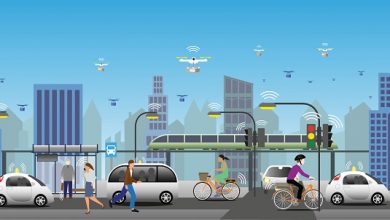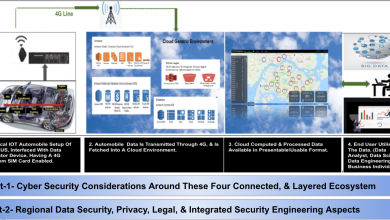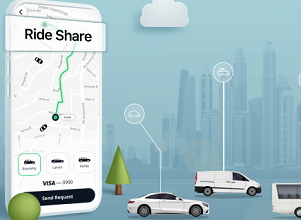Shared Mobility Challenges Call for Shared Technology Solutions

Covid-19 has brought the spotlight on shared mobility services, which perhaps would have taken longer to become apparent without the advent of the pandemic. Frost & Sullivan projects the global number of users of shared mobility services will reach 36 million users by 2025 – a doubling of numbers from 2020.[1] While North America and Europe have been significant markets, the trend is shifting towards increasing adoption in Asian countries. By contrast, significant consolidation and divestment has also been the order of the day, as existing providers have failed to meet revenue and margin targets. The search for a workable business model in the shared mobility service space continues to be a work in progress.
There are many challenges in the mobility as a service space. Shared mobility models have not always delivered on the promise of integrated, affordable door-to-door transport. A customer requires a combination of multiple mobile apps and multiple shared mobility service providers to travel from one location to the other. Ideas around integrated transportation, particularly in urban locations, have been debated for several decades, but with mixed results. Some cities offer public transport tickets that are inter-changeable between bus, tram, metro and train services – but is this the extent of the mobile as a service vision? Not all locations in cities are covered by these types of arrangements and extra-urban and rural areas are not covered at all, meaning there is still a need to use different means to acquire access to multiple modes of transport. The involvement of municipal authorities is necessary to manage and co-ordinate services, else many different agencies and private enterprises become involved in an un co-ordinated approach to shared mobility, which can create additional problems with traffic congestion and co-ordination.

Technology innovation and adoption, already used so efficiently in the ride hailing sector, represents an opportunity to establish a more integrated approach to shared mobility service silos. Mobility as a service can be extended further to include micro-mobility services (bicycle sharing or scooter sharing for example). However, the first challenge for a user will be how to locate and access a rented vehicle? Do they go to a parking lot, or is there a roadside location where they can collect it? In so called ‘free floating’ models, a vehicle can be collected or dropped off anywhere within a defined geographical zone. This calls for a mobile app that can reserve, locate and unlock a vehicle, as well as some means for the mobility service provider to track the vehicle accurately, bearing in mind a vehicle might be located in an under-ground parking lot, making its location even more difficult to pinpoint.
Seamless vehicle connectivity is important, not just to help find vehicle’s location, but also to monitor usage, ensure regular maintenance and update of relevant in-vehicle software, and to help recover vehicles in the event of theft. However, even the most-developed, urban location might face connectivity issues at times. This means that some combination of cellular and low-power WAN technology, possibly combined with satellite-based GPS might all be required for a vehicle. The optimum combination might be some form of dynamic, bearer independent connectivity to ensure that whether a vehicle is on the road, in a garage or parked in an under-ground parking lot, it can still be located. For remote locations the need to be able to switch between LP-WAN based connectivity, cellular or satellite is an even more important requirement, to ensure vehicle traceability. If a driver decides to take the vehicle beyond a prescribed zone, then it is important to monitor the driver’s whereabouts both to recover a potentially stolen vehicle, as well as to bring it back into regular usage as quickly as possible. Avoidance of theft and vehicle recovery is one consideration, while cyber-crime and vehicle hacking is another concern. Shared mobility is just not limited to conventional vehicles. but also has the potential to tap into the autonomous vehicles of the future. Criminals have an interest in hacking vehicles for the purpose of theft. While automobile manufacturers are looking at innovative technologies to provide a world-class, all-connected driving experience to their car owners, security of the vehicle data ranks amongst their top priorities.
It is also important to ensure that an acceptable level of vehicle supply is maintained with a vehicle inventory that meets the demands imposed by the subscribers to the shared mobility service. With station based micro-mobility services, racks with bicycles are maintained at certain points within a city. These are usually at train stations, but also in other popular drop-off and collection points. The ability to maintain visibility of assets and despatch collectors to re-distribute inventory is an integral part of the shared mobility service. In the case of shared mobility cars, there is discussion about the use of designated locations – so called ‘Dark Dealerships’ [2] for vehicle collections and drop-off, although the cost of maintaining real-estate in some expensive urban locations puts further strain on shared mobility service provider margins.
Predictive maintenance and fuel/battery monitoring are some of the key benefits of a connected vehicle. Unlike conventional car hire models, there is little or no time between shared vehicle usage, so the vehicle cannot be checked for any mechanical or physical damage, or cleaned between different users. As shared mobility implies that vehicles are being driven for extended periods of time, the ability to use telematics to track wear and tear is important, so that a vehicle can be taken out of service at the right time for routine maintenance.
Shared mobility is gaining in popularity, but the commercial model challenges and some of the practical considerations in shared mobility adoption need technology solutions throughout the user journey – from using a mobile app to book, locate and access a vehicle, through charging and billing models, to the need for dynamic, multi-bearer connectivity to track vehicle usage and monitor telematics. These are integral requirements not just for commercial success but in many cases to comply with local licensing and regulatory requirements. Add to this the application of technology to secure vehicles against theft and cyber-crime, and it becomes clear that a technology platform-based approach to address these challenges is required. A technology platform enables the customer service and user access elements on one side, while enabling the mobility as a service provider to manage connectivity, visibility, vehicle monitoring and security –with a single integrated solution.
Author:
Bhaskar Ghose
Business Head – Connected Automotive Solution (South Asia)
Tata Communications
[1] https://store.frost.com/future-of-carsharing-market-to-2025.html
[2] https://www.futuremind.com/blog/car-sharing-and-transportation-trends
Published in Telematics Wire




